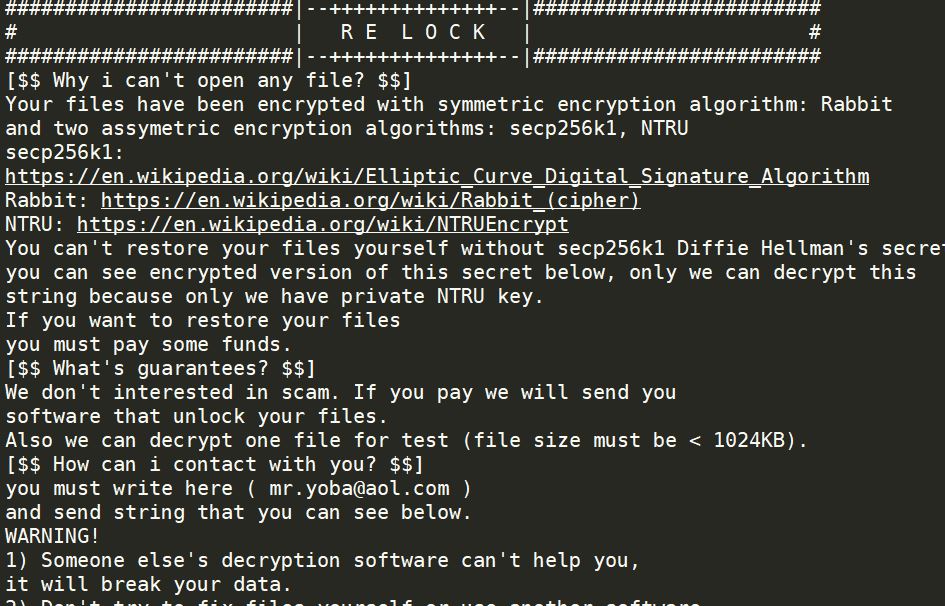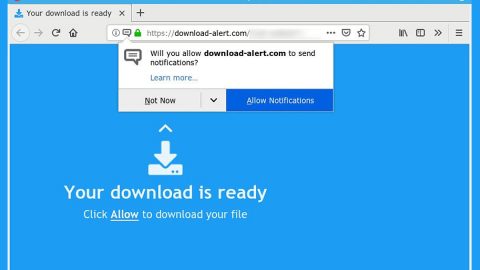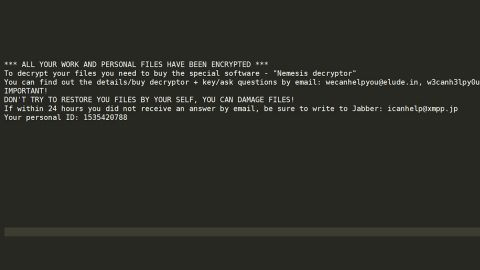What is Relock ransomware? And how does it carry out its attack?

Relock ransomware is a new data-encrypting malware created to encrypt important files in a computer. It adds an extension that consists of a group of numbers to every file it encrypts. This was first spotted in early August 2019 and locks data using the XOR cryptography.
Once Relock ransomware is activated on a targeted system, it adds more malicious files to help it execute its attack – some of which are created by the ransomware itself while others are downloaded from its Command and Control server. After it successfully drops these files in the essential Windows system folders, it might also create and alter some Registry entries so it can run on every system startup. Following the modifications in the registry, Relock ransomware will scan the entire computer drive to look for files to encrypt.
It most likely targets common user-generated files like documents, images, databases, videos, audio files, and so on. As mentioned, it uses the XOR encryption algorithm in locking files and after it locks these files, it appends random numbers to each one of them and releases two ransom notes namely, FIX_Instructions.txt and FIX_Instructions.hta, which contains the following message:
“########################## | – +++++++++++++++ – | ###### ####################
# | R E LOC K | #
########################## | – +++++++++++++++ – | ###### ####################
[$$ Why i can’t open any file? $$]
Your files have been encrypted with symmetric encryption algorithm: Rabbit
and two assymetric encryption algorithms: secp256k1, NTRU
secp256k1:
https://en.wikipedia.org/wiki/Elliptic_Curve_Digital_Signature_Algorithm
Rabbit: https://en.wikipedia.org/wiki/Rabbit_(cipher)
NTRU: https://en.wikipedia.org/wiki/NTRUEncrypt
You can’t restore your files yourself without secp256k1 Diffie Hellman’s secret,
you can see encrypted version of this secret below, only we can decrypt this
string because only we have private NTRU key.
If you want to restore your files
you must pay some funds.
[$$ What’s guarantees? $$]
We don’t interested in scam. If you pay we will send you
software that unlock your files.
Also we can decrypt one file for test (file size must be <1024KB).
[$$ How can i contact with you? $$]
you must write here ( [email protected] )
and send string that you can see below.
WARNING!
1) Someone else’s decryption software can’t help you,
it will break your data.
2) Don’t try to fix files yourself or use another software,
it will break your data.
Diffie Hellman’s secret (encrypted version):
—– BEGIN RELOCK KEY —–
{25, 20, 0, 32, 35, 118, 68, 51, 22, 78, 8, 45, 41, 19, ***};
{35, 34, 108, 22, 57, 26, 83, 39, 111, 38, 82, 116, 53, ***};
{68, 88, 95, 80, 120, 75, 107, 106, 56, 17, 7, 58, 32, ***};
—— END RELOCK KEY —–
####################################################### ########################”
How does Relock ransomware proliferate?
Relock ransomware distributes its malicious files through spam emails where it attaches a document embedded with macro scripts that are used to download Relock ransomware into the computer. In addition, this ransomware also uses fake updates and software in spreading its malicious files. Since it uses various distribution methods you have to be careful in opening any email attachments especially if they look suspicious. Moreover, in case you need to update your system, make sure you do so using a legitimate and secure source.
Obliterating Relock ransomware wouldn’t be easy so you need to follow the removal guide provided below.
Step_1: First, boot your computer into Safe Mode with Networking, and afterward, you have to terminate the malicious processes of Relock ransomware using the Task Manager and to open it, tap Ctrl + Shift + Esc keys.
Step_2: Go to the Processes tab and look for the malicious processes of Relock ransomware and then right-click on it and select End Process or End Task.
Step_3: Close the Task Manager and open Control Panel by pressing the Windows key + R, then type in “appwiz.cpl” and then click OK or press Enter.
Step_4: Look for dubious programs that might be related to Relock ransomware and then Uninstall it/them.
Step_5: Close Control Panel and then tap Win + E to launch File Explorer.
Step_6: After opening File Explorer, navigate to the following directories below:
- %TEMP%
- %APPDATA%
- %DESKTOP%
- %USERPROFILE%\Downloads
- C:\ProgramData\local\
Step_7: From these directories, look for the malicious components of Relock ransomware such as FIX_Instructions.txt, FIX_Instructions.hta, and [random].exe as well as any other questionable files and then delete all of them.
Before you proceed to the next steps below, make sure that you are tech-savvy enough to the point where you know exactly how to use and navigate your computer’s Registry. Keep in mind that any changes you make will highly impact your computer. To save you trouble and time, you can just use [product-name], this system tool is proven to be safe and excellent enough that hackers won’t be able to hack into it. But if you can manage Windows Registry well, then by all means go on to the next steps.
Step_8: Close the File Explorer and tap Win + R to open Run and then type in Regedit in the field and tap enter to pull up Windows Registry.
Step_9: Navigate to the listed paths below and look for the registry keys and sub-keys created by Relock ransomware.
- HKEY_CURRENT_USER\Control Panel\Desktop\
- HKEY_USERS\.DEFAULT\Control Panel\Desktop\
- HKEY_LOCAL_MACHINE\Software\Microsoft\Windows\CurrentVersion\Run
- HKEY_CURRENT_USER\Software\Microsoft\Windows\CurrentVersion\Run
- HKEY_LOCAL_MACHINE\Software\Microsoft\Windows\CurrentVersion\RunOnce
- HKEY_CURRENT_USER\Software\Microsoft\Windows\CurrentVersion\RunOnce
Step_10: Delete the registry keys and sub-keys created by Relock ransomware.
Step_11: Close the Registry Editor.
Step_12: Empty your Recycle Bin.
Try to recover your encrypted files using their Shadow Volume copies
Restoring your encrypted files using Windows Previous Versions feature will only be effective if Relock ransomware hasn’t deleted the shadow copies of your files. But still, this is one of the best and free methods there is, so it’s definitely worth a shot.
To restore the encrypted file, right-click on it and select Properties, a new window will pop up, then proceed to Previous Versions. It will load the file’s previous version before it was modified. After it loads, select any of the previous versions displayed on the list like the one in the illustration below. And then click the Restore button.
Congratulations, you have just removed Relock Ransomware in Windows 10 all by yourself. If you would like to read more helpful articles and tips about various software and hardware visit fixmypcfree.com daily.
Now that’s how you remove Relock Ransomware in Windows 10 on a computer. On the other hand, if your computer is going through some system-related issues that have to get fixed, there is a one-click solution known as Restoro you could check out to resolve them.
This program is a useful tool that could repair corrupted registries and optimize your PC’s overall performance. Aside from that, it also cleans out your computer for any junk or corrupted files that help you eliminate any unwanted files from your system. This is basically a solution that’s within your grasp with just a click. It’s easy to use as it is user-friendly. For a complete set of instructions in downloading and using it, refer to the steps below
Perform a full system scan using Restoro. To do so, follow the instructions below.













